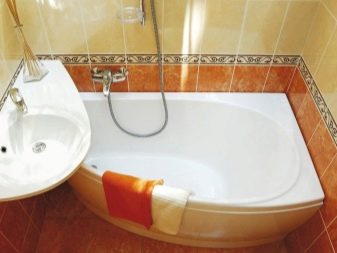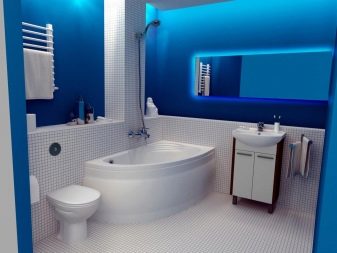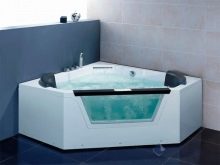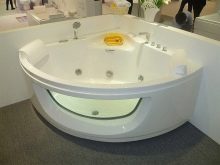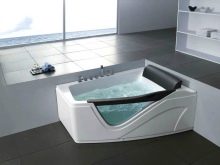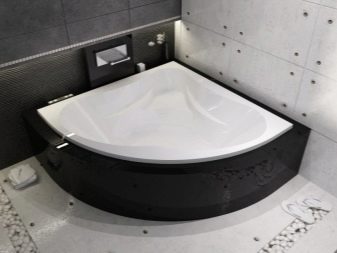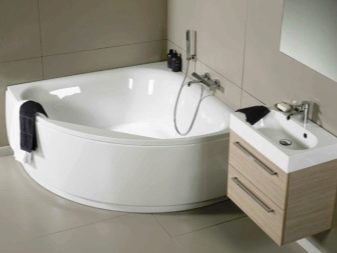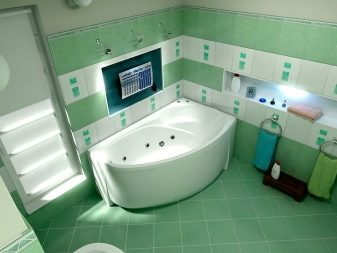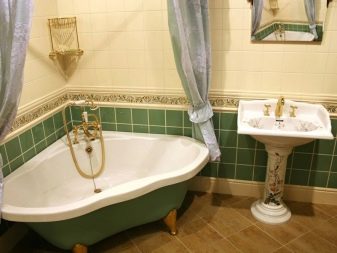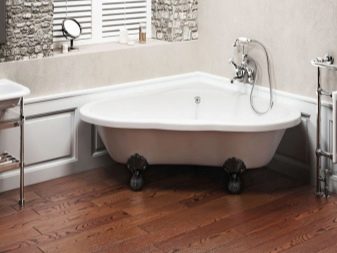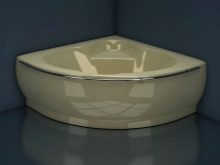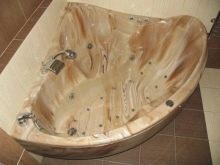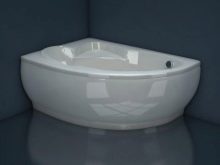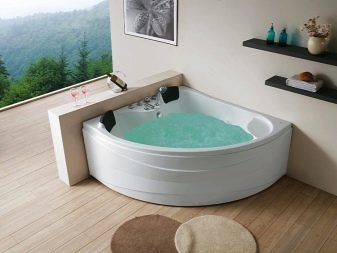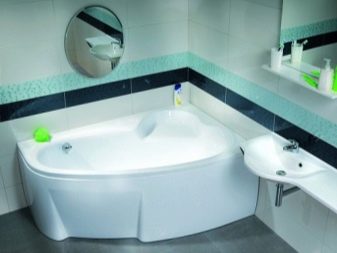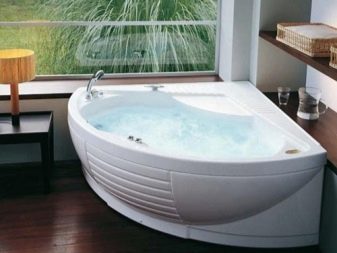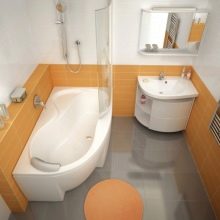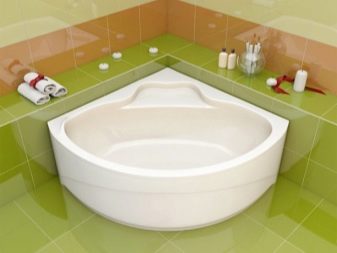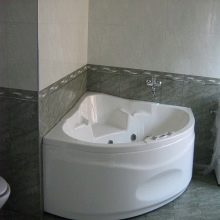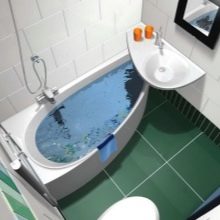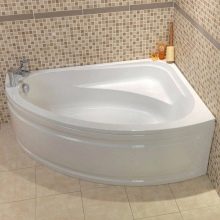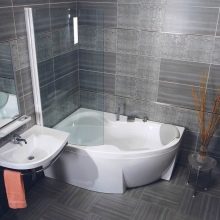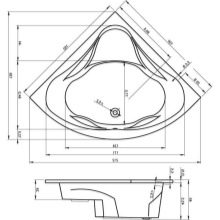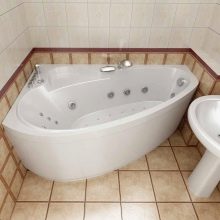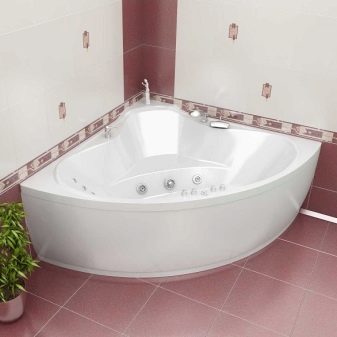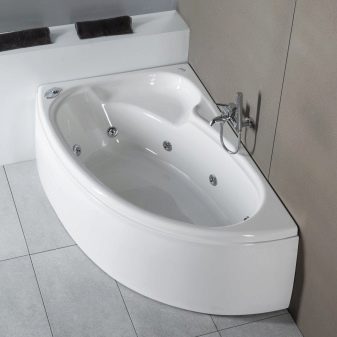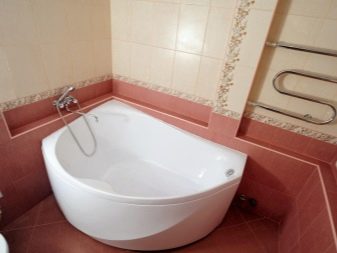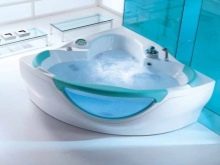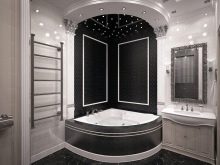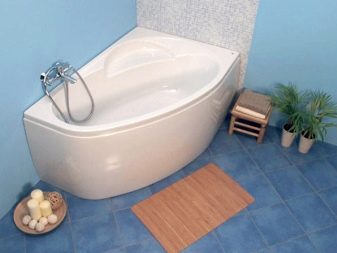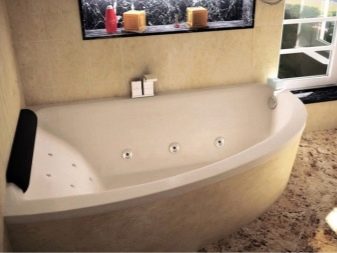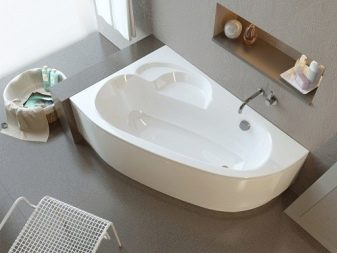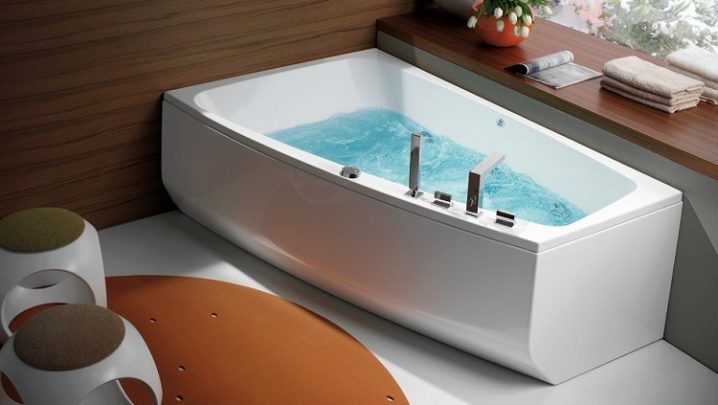How to choose a small corner bath?
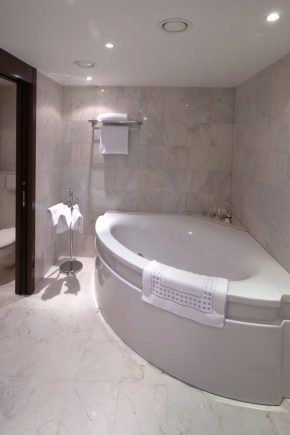
Apartment owners with a small-sized bathroom often refuse to install a traditional bath, making a choice in favor of showers. However, even the most modern shower enclosures are not able to fully replace the bath. It allows you to wash, relax, rest. Older people are often unable to use the shower; they are much more accustomed to bathing. The need for a bath is recognized by families with small children. Today, manufacturers offer the best solution - corner baths, which seem to be designed for small bathrooms.
Special features
The main feature of this design is the place of its installation in the corner (along two adjacent walls).This location allows you to free up the space of the room, to increase the usable area. At the same time the bowl itself retains its functionality and capacity. Depending on the model, an adult will knead in a half-sitting or lying position with comfort.
Due to its ergonomics, the corner bath is optimally suited for a small room, including bathrooms of Khrushchev. It allows you to transform the interior, make it stylish and original. It is not easy to achieve one or another stylistic effect in a small room. However, using the angular design is possible. This is due to the fact that the installation of such a bowl frees up space (an additional field for the realization of design ideas), the room visually seems larger.
In addition, the bowl itself may have an original appearance (an unusual shape, embedded translucent inserts, unusual colors). Corner bath is easy to install. Its installation and connection are not much different from the installation of other types of font. The only point is that before installing a symmetrical bath, you must make sure that the angle where the device is placed is straight.If this is not the case, do not do without the procedure of leveling the corners.
The downside is the high price of corner bowls. However, according to users, this drawback is forgotten after a few weeks of using the bathroom. The advantages and disadvantages of the design depend on the material from which it is made, as well as the version.
In general, the designs are quite comfortable.
Types and forms
Corner bath can be made of different materials.
Acrylic
The most common type of corner structures, due to the reliability, high thermal insulation properties and affordability of the material. The bath surface is smooth and pleasant to the touch. The water, gathering in it, does not rattle, cools slowly (half an hour per 1C). Acrylic baths are quite light, so they can be used in buildings of the old type with dilapidated floors. Their service life is 10-15 years.
Today, on sale you can find improved models of acrylic bowls on the basis of quary.
Metal
Metal baths are usually represented by steel and cast iron options. Both models are gradually leaving the plumbing market.Iron baths are durable, keep warm, but at the same time they rumble when water falls, they are cold to the touch. Cast iron version has a large weight and high cost. Their life expectancy is on average 30 years.
Steel is lighter and cheaper, but less durable.
Stone
Stone products are bowls of artificial stone. Unlike analogue of natural stone, such devices are easier, safer. They have antibacterial properties and have no radiation background. Well keep the temperature of the water, pleasant to use. Modern products made of stone powder are stronger than marble, and at the same time imitating the surface of natural stone as closely as possible. Among the advantages of this product can be noted the diversity of shapes and colors, durability.
The disadvantages are high weight and high cost.
Plastic
Plastic construction can be used in small rooms, but only if the bowl is rarely used. Such restrictions are associated with low indicators of the strength of the material, its tendency to deformation, cracking at low temperatures.In this regard, in urban apartments, plastic bowls are extremely rarely installed.
Corner bath can have various forms, but all variety is reduced to 2 types:
- symmetrical;
- asymmetrical.
The first one has 2 identical sides, usually it is represented by a triangular or trapezoidal shape, as well as a quarter-circle structure. This option is preferred for small spaces. An asymmetrical bath has different sizes of sides and usually implies sufficient free space. It looks interesting, but it is not always possible to fit it into the standard sanitary facilities of model apartment buildings. If the bathroom has a complex configuration (for example, niches), you can try to find a suitable model.
An asymmetrical bath is right-handed and left-handed. This is due to the presence of shelves and grooves for more convenient placement in the bowl from one side or the other. Bowl angles can be sharp or rounded. The second type is preferred because of its security. Today, even miniature models can be equipped with a hydro and aero massage system, have a shower panel, a glass door or a vinyl curtain.
Dimensions
Installing a corner bath in a small room, it is important to fit it into the available space, to choose a convenient design. The optimal size of the corner bowl is the parameter 150x150 cm. However, small bathrooms rarely allow you to arrange such a product. In this case, you have to be content with a bowl, the dimensions of which are 120x120 cm.
The smallest symmetrical corner bath has parameters of 100x100 cm. If the wall length is reduced to 80- 90 cm, then it is rather a shower tray. For the Khrushchev houses, the optimal dimensions for bowls are 115 by 72 cm, while the long side of the structure occupies almost the entire wall of the room. If it is necessary to install not only plumbing fixtures in the bathroom, but also a pencil box, a washing machine and accessories, the bowl size can be reduced to 100x70 cm. In the process of using the mini-bathroom, the difference with the previous model will be hardly noticeable, however, the difference will be noticeable in relation to the vacated space.
An important parameter is the height of the bath. The optimum height is 50-70 cm, while the depth of the bowl will be 10 cm shorter. If it is assumed that the bathroom will be used by elderly relatives or disabled people, it is better to choose lower designs with a height of 45-50 cm.It is important that the height of the bathroom is proportional to the length and width of the bath. For a bowl measuring 110x110 cm, the height is 70 cm too large. The design will look cumbersome, overly massive and visually reduce the already small bathroom. The size of the bath should be such that the most dimensional family member can comfortably sit in it. (ideally - stretch your legs and put your head on a special stand).
How to place?
As for the location of the mixer, there are 2 possible options for installing it:
- put directly on board the bath;
- secure to an adjacent wall.
This should be resolved immediately, since the installation location of the mixer determines the piping layout. When choosing an equilateral model, it occupies 2 walls. At the same time with each side, as well as in front of the bathroom there is free space. A versatile bowl occupies all or most of one of the walls and captures some space of the second wall.
Both options are convenient for small bathrooms. The choice of a particular due to the characteristics of the room and personal preferences of users. When installing the bowl should not forget about regulatory requirements.According to them, the minimum distance from the bath to the door should be 70 cm.
Tips and tricks
To make the room visually more spacious will allow the use of white plumbing. If this color seems to you a relic of the past, choose colored materials in light pastel shades. The beige palette, shades of water, universal black color organically looks. Black and white classics also allows you to expand the room, but only with the proper design (metered use of black).
If the bathroom is supposed to have a glass door, give preference to transparent models. They do not stand out and merge with the overall interior. If mirrors are placed on both walls behind the corner rounded bath, not only will the feeling that the bath is round, but also an additional area in the room. Both effects, of course, are only visual.
It is not necessary to use large mirrors, it is enough to place in the bathroom a finish with a smooth surface (for example, tiles).
- The most popular are corner baths of acrylic. To make the product last 10 years or more, it is distinguished by its durability and attractive appearance,It is necessary to purchase a bowl made of sheet acrylic with a sheet thickness of 5-8 mm. The composition of the product should be 100% cast acrylic.
- Bowls of extruded material, impurities quickly fail. Their surface is already after 1.5-2 years of operation is covered with cracks. With insufficient quality reinforcement, they do not withstand heavy weight loads.
- When buying, you should tap the surface of the acrylic bowl, the audible sound should be deaf. Try to put your hand on the bottom of the bath: it should not fluctuate and bend.
- The surface of a high-quality bowl of acrylic is glossy, with a barely noticeable glow, it is smooth to the touch.
If means allow, buyers choose baths from an artificial stone. Pay attention to the surface - it should not be pores, cracks, damage. The presence of microscopic holes indicates a violation of production technology. Such a bath will absorb pollution and will quickly lose an attractive appearance. Its antibacterial ability will quickly decline.
In the composition of the stone bath should be at least 80% of stone chips, the rest is polyester resins, plasticizers, pigments.Stone chips - small fractions of marble, porcelain, malachite, jasper. The combination of several types of a crumb is possible. In order to reduce the cost of the finished product, quartz sand can be used instead of stone chips.
However, with a reduction in the price, a decrease in strength occurs, and with it the life of the product.
When choosing a color model of a compact corner bowl made of stone, pay attention to the drain hole. Looking at it, you will understand whether the bath is colored throughout the entire thickness: the color layer can only be on the surface. The first method of coloring is preferable, since the color will be more uniform, it will remain throughout the entire period of use of the device. When a crack appears, it will not be too noticeable, because it has the same shade as the color of the bowl. Acrylic and ceramic baths cannot be cleaned with products containing abrasives, use aggressive liquids, hard brushes and graters to cleanse them. From this, microcracks form on their surface, which leads to deterioration of the moisture resistance of the coating, reduction of its strength.
As for the manufacturer, the most expensive are the corner devices of German, Spanish, Italian, Czech and Austrian brands.Trademarks demonstrate the highest quality, product safety, delight the variety of the collection. It is important to purchase products in specialized stores, to require certificates from the seller confirming the originality of the products, since it is the imported models that most often fake. Domestic models (often joint with a European company) are not inferior in quality and performance to imported ones, but they are cheaper. Their disadvantage is a smaller number of presented models in terms of design diversity.
You can find out how to install a corner bath in an unconventional way in the video below.

